From the workforce planning to driving employee productivity while working remotely, managing a company’s most valuable asset – the people – is a thing no business leader can ignore.
MindK develops custom solutions for HR and recruitment industries. Some of our clients opt for cutom software to streamline the performance managments process and save time. However, there are also other performance management challenges business leaders face.
Do employees clearly understand what they are supposed to do? How to motivate the workforce and maximize effort? These are only some of the questions employee performance management is supposed to deal with. If you have difficulties answering these questions, then you likely have a growing need for performance management system.
In order to help you check this assumption, the MindK team prepared a list of major signs that highlight issues in performance management and a way to solve them.
First, let’s puzzle out what drives the challenges in employee performance management that you may be facing right now.
The new era of employee performance management
More and more business leaders and C-level executives come to the conclusion that traditional performance management is not able to solve the rising number of HR needs.
Only 2% of organizations feel their approach to employee performance management is delivering exceptional value. But what changed and what should you take into account when improving your performance management?
First, the workplace is evolving. A decade ago, the more we produced or the more we worked, the better our performance score. Today, the business environment is a more complicated “machine”. It is not only about the production or output, it is more about innovation, creativity, communication, adaptability, and critical thinking. Most employees now are valuing professional development, alignment with company needs, and work-life balance.

Second, technology has become a huge competitive advantage no matter what industry or sphere you think about. Automation of performance management processes and various employee performance management solutions have revolutionized the way employee performance is measured, reviews handled, employees are engaged, and feedback given.
Moreover, a technology-based performance management system is able to boost productivity, improve retention, optimize compensation, and brighten the overall business performance of the company.
Yes, performance management is without a doubt among the critical human resource processes that require automation in 2021.
Based on these facts, we proceed to the apparent signs of a poor performance management process and how automation can help improve it.
Major performance management pain points solved with one shot
Pain #1. Lack of transparency between employees and management
The report “Performance management digital shift” considers lack of transparency the number one problem of present performance management practices.
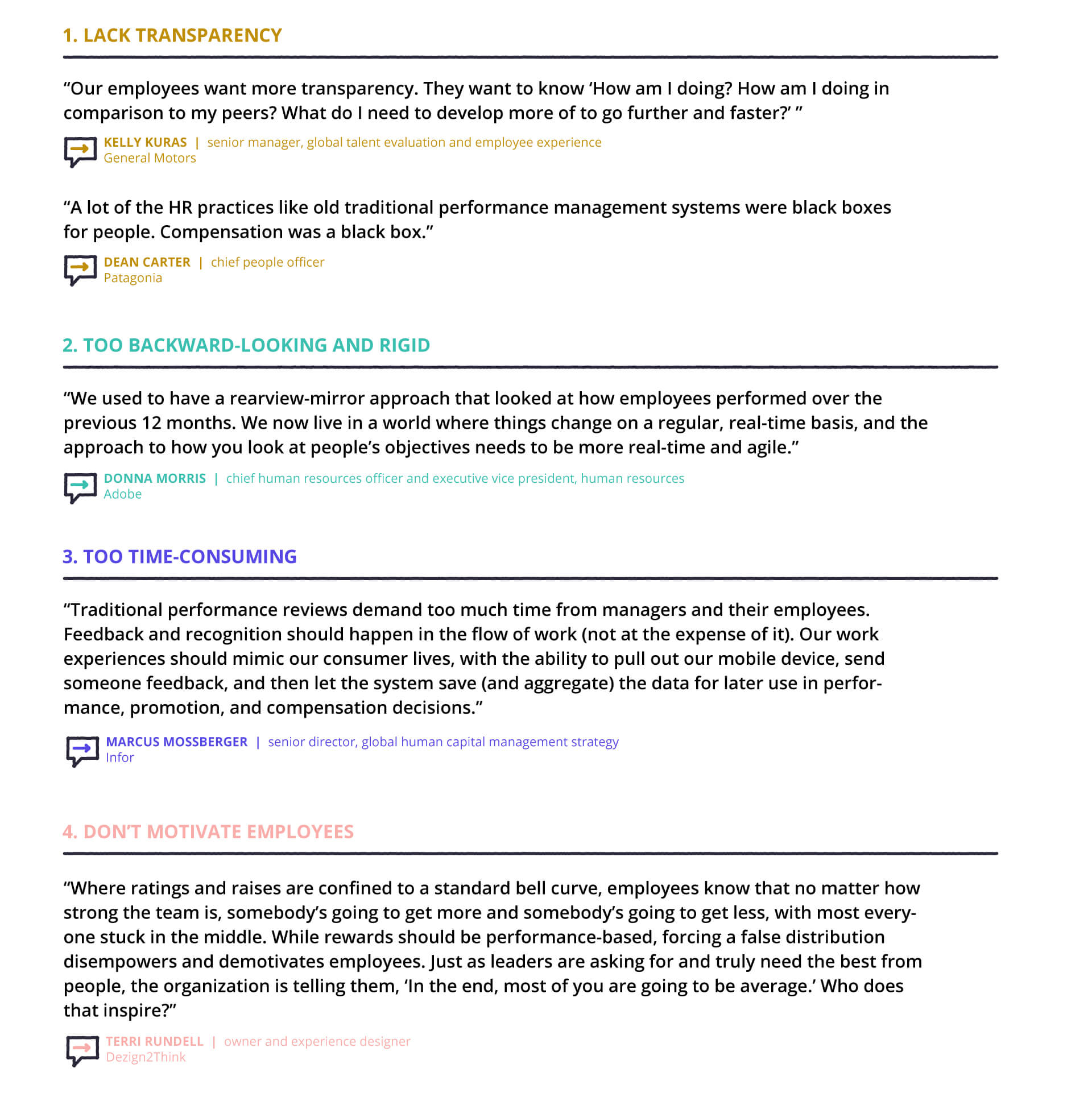
Lack of transparency refers to a number of different things like performance reviews, productivity, manager feedback, and so on. Employees are unsure about the fairness of their appraisals, which is why the majority of people do not believe the quality of their work has any correlation with how employees are measured, developed, or promoted.
Did you know that only 29 percent of employees strongly agree that their performance reviews are fair, while only 26 percent believe they are accurate?
On top of that, a quarter of employees don’t know how to request feedback, while the majority of HR leaders and managers believe that feedback request practices are clear for everyone in the company.

This is a statistic every business leader should definitely consider dealing with.
From this perspective, the major aspects your performance management should focus on to increase transparency are appraisals and feedbacks. Simply put, people should be able to clearly see the factors that influence their appraisal and get timely feedback on what they are doing well and where they can improve.
Solution: Implementing automated management systems can help significantly reduce these challenges.
First, one of the benefits of a performance management system is that it makes performance evaluations an easy thing for managers and a fair thing for employees. An appraisal management system allows collection, measuring, and managing workforce performance data to detect performance gaps and identify top and low performers.
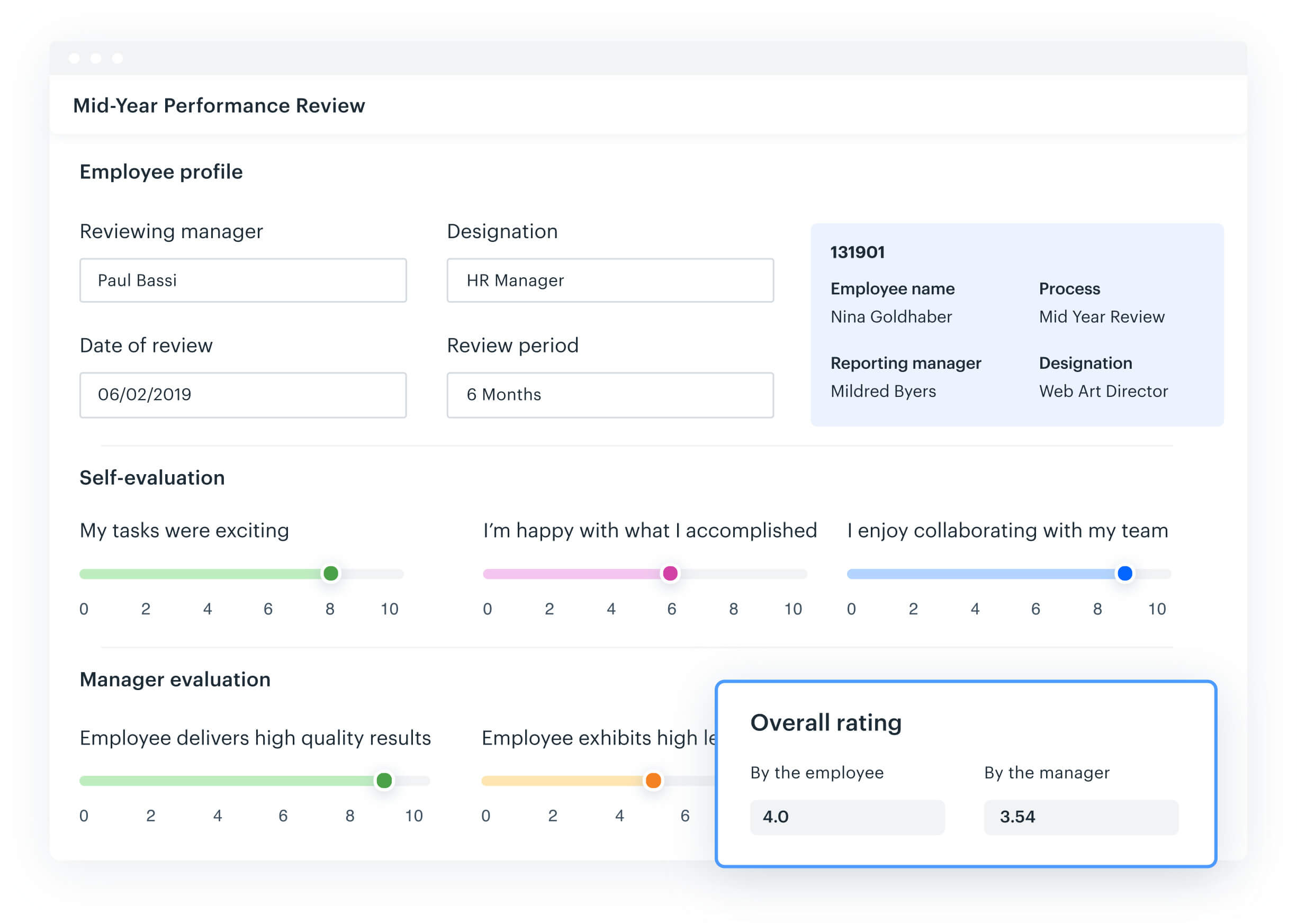
Source: kissflow.com
Second, implementing the performance management system will allow you to create a rating scale. It will help brighten the consistency of ratings, and as a result, employees will perceive the process to be fairer and take feedback more seriously.
Implementation of the rating distribution scale
Source: betterworks.com
Finally, an automated employee performance management system allows the provision of valuable feedback to employees more often. Almost 68% of respondents agree that timely feedback conversations usually have a positive influence on employee performance. It helps to keep managers and employees on the same page and build credible relationships that are impossible to establish during a few formal meetings.
For example, introducing a custom-based employee performance management and development system to Cargill, a global food corporation, gave great results. Almost 69 percent of employees said that the feedback they started to receive improved their career development, while 70 percent said they felt valued due to continuous performance discussions with the manager.
Pain #2. Much time spent on performance management routine
If managers, HR specialists, and employees are long over preparing for the annual performance reviews or other appraisals, it is a wake-up call.
For example, only one employee annual review requires an HR specialist a ton of paperwork to be done including documenting, summarizing, creating reports, getting approval from managers, distributing results to the right people on schedule, and much more. The result is a 15-20 minute talk between a manager and an employee that is not always rewarding.
If you deal with a large number of staff and do not have a centralized solution for that, these administrative routines may take months. In the end, HR and managers end up spending their time pushing paper instead of discussing performance issues and development.
Solution: Automated workforce management fast-tracks the whole performance management workflow and reduces the paperwork. There are many ways building a custom performance management and recognition system can streamline performance workflows. Everything depends on your specific internal processes.
For example, automating the process of storing data within one system allows accessing and exchanging information seamlessly between everyone involved. Timely alerts and notifications will remind of deadlines, demonstrate progress of tasks and eliminate any miscommunication or broken promises. A visual timeline of the online performance review workflow helps ensure timely review completion. Comprehensive performance dashboards both for employees and managers facilitate HR decision-making and dramatically speed up communications.
These are only a few possible features of an employee performance monitoring system that will help you streamline the workflows in your company.
Pain #3. Low workforce productivity and motivation
Employee productivity is a crucial factor that should not be overlooked. The majority of business leaders use it to determine the health of the performance management process.
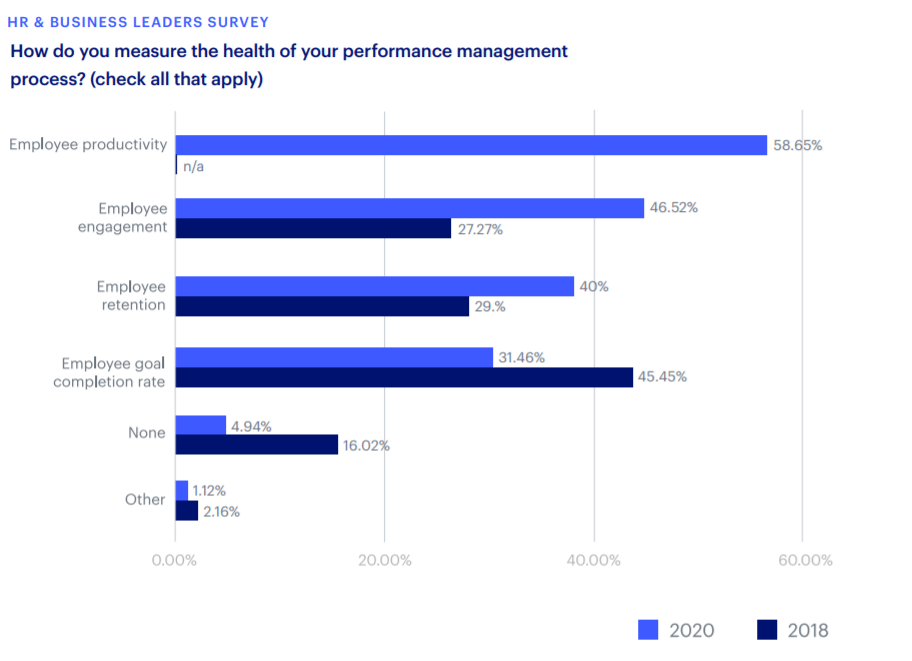
The problem of low employee productivity (and motivation, as they are usually mutual) may lie in the absence of clearly defined goals and no correlation between these goals and company objectives. As you already know, the “purpose” is critical for employees in the modern workplace.
It may surprise you but a report from Gallup revealed that 1 in 2 employees clearly understands what is expected of them when they come to work every day. According to the same report, only 44 percent of employees agree they can link their goals to the company’s goals.
These numbers mean that half of the employees may not understand their value to the company. Are you sure your workforce has a 100% understanding of their and the company’s objectives?
Solution: A HR performance management system is able to simplify the task of creating and spreading shared goals inside the organization. Such a performance management program for employees has all chances to increase motivation.
In addition, automating goal setting and performance management allows employees to easily capture and revisit their goals and manager feedback in one place. It improves the collaboration between employees, managers, and other team members.
By making goals visible on the dashboards, staff can track, review and analyze their progress of objectives. This ensures that employees with the right skills are working on their personal goals, improving their productivity and your business performance at the same time.
Around 46 percent of respondents report effective performance management when the employees’ goals are linked to business priorities (compared to 16 percent at companies not following this practice).
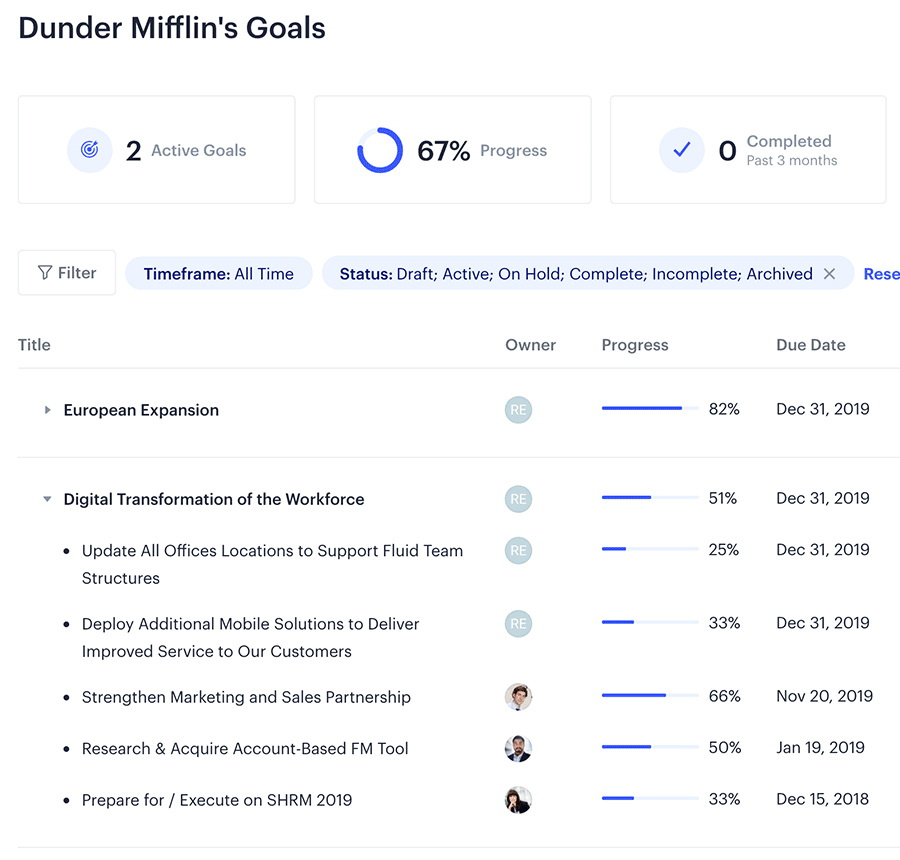
Source: reflective.com
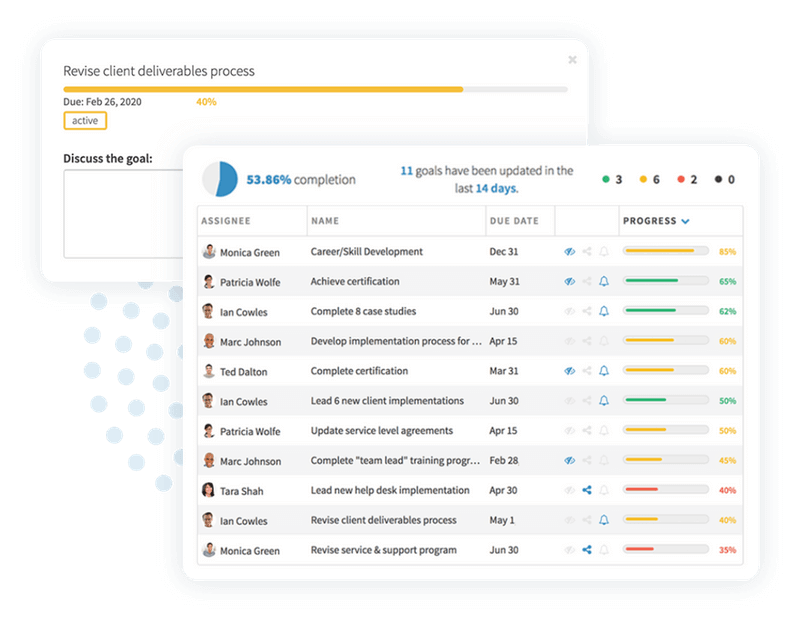
Pain #4. High employee turnover
Turnover is an expensive problem for any company. It is estimated that losing and replacing one employee may cost you 1.5–2.0x the employee’s annual salary. Moreover, the financial burden grows significantly depending on the level of seniority.
One of the key reasons for the high turnover rate is an ineffective performance management process represented by the problems we discuss in this article.
Solution: Automating workflows and investing in a human resource performance management system can reduce turnover for much lower cost. For instance, improvements to Adobe’s performance management system and regular check-ins managed to cut turnover up to 30 percent.
Count the cost of turnover for the company with a hundred employees and a 15% turnover rate. Supposing the average annual salary of employees is $70,000 and the turnover cost is 80% of the salary, then employee turnover will cost this company around $840,000 a year.
If we assume that implementing an automated performance management system can reduce attrition by at least 2 percent (from 15% to 13%), the company can save on average $112,000 every year. In this way, you can quickly compensate for the cost of software developed specifically for your company’s needs.
Pain #5. Poor performance metrics and lack of analytics
One of the biggest challenges of performance management is collecting the data for analysis. This pain point intersects with all the above-mentioned problems and we definitely consider it one of the root causes of low productivity, high turnover, and other performance problems.
People analytics is among the top trends in human resource management today. Around 70% of business executives consider people analytics their key priority in the nearest future.
Solution: It is almost impossible to make any important decisions related to people’s work or a company’s development without an automated performance evaluation system at your disposal.
Among the benefits of performance management systems are the generation of powerful insights and comprehensive reports in the blink of an eye. The system provides access to a variety of data about employee performance and development needs.
HR specialists, managers, and employees can use this data to analyze productivity, improve ratings, build career and development plans, fill in performance gaps, make fair appraisals, and much more. Simply put, automating people analytics will allow your company to manage your workforce more effectively and, therefore, to operate the business more efficiently and raise revenue.
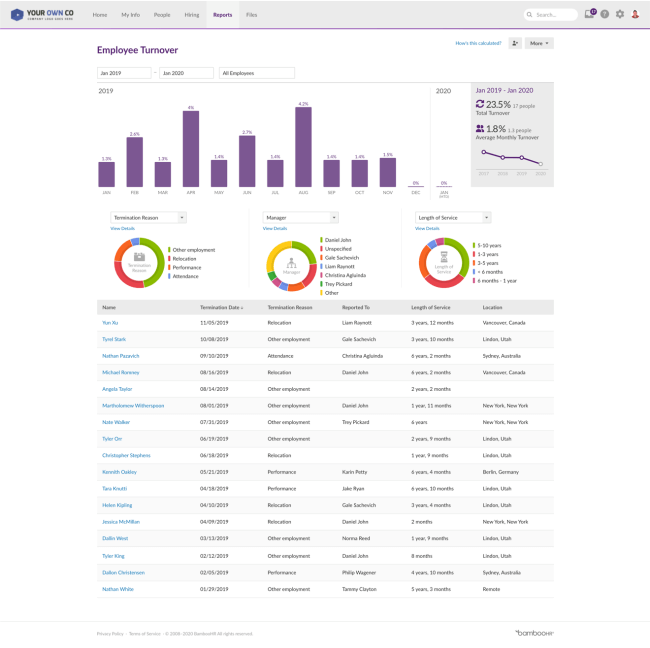
Source: bamboohr.com
Let’s take your performance management to the next level
With business becoming more and more competitive, managing employee performance becomes more critical than ever before. Good performance drives the results, so no organization nowadays can afford to disregard performance management.
At MindK, we’ve been providing custom application development for more than a decade and see the competitive advantage their businesses gain with these solutions. You can check out our portfolio to make sure. So, we are confident that after you decide to automate your performance management, spectacular results won’t be too long in coming.
MindK team can help to transform all your specific performance workflows into a winning solution that will solve major performance management challenges. Check out our HR Software Development Services and contact us to start the cooperation.
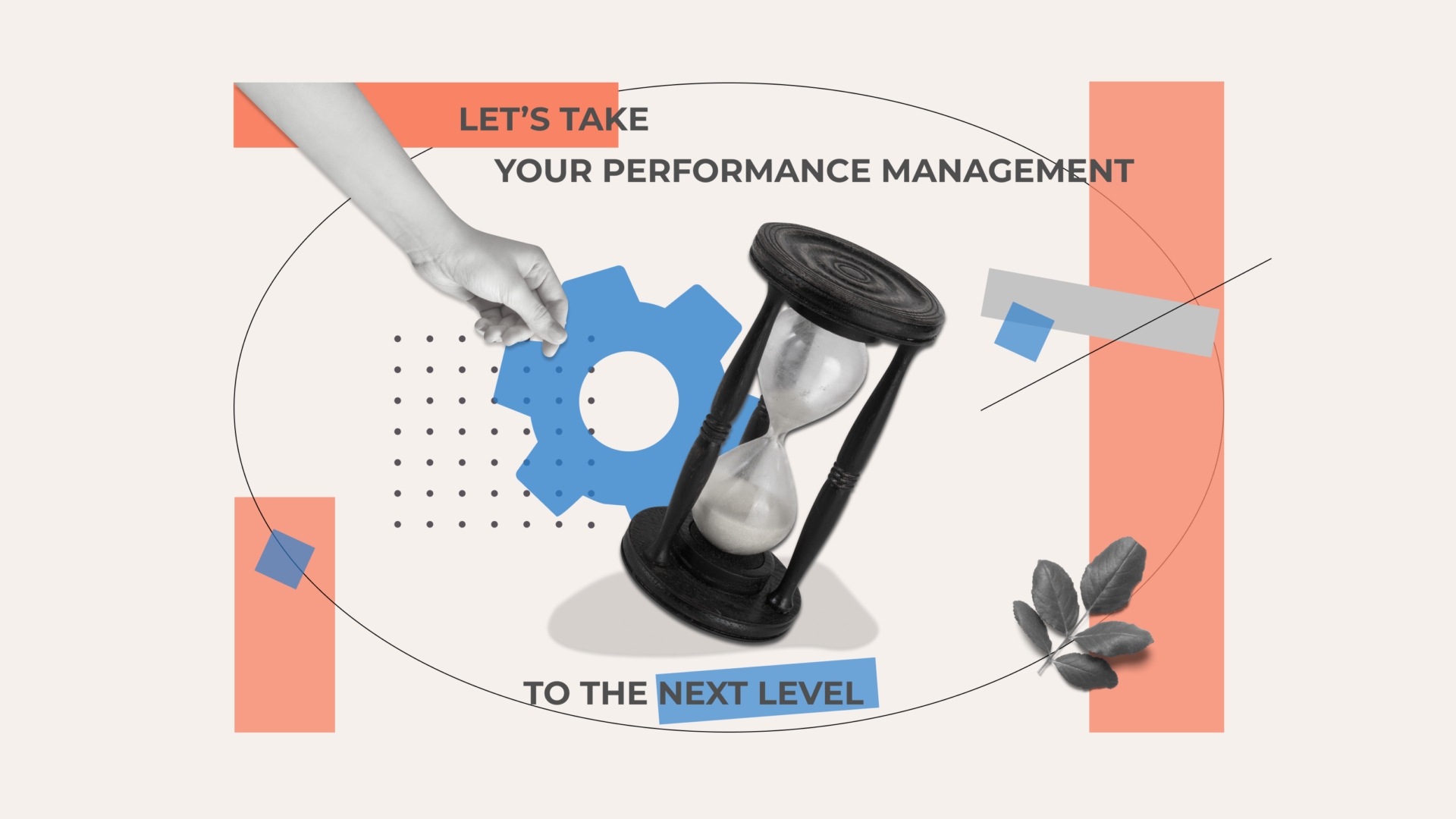
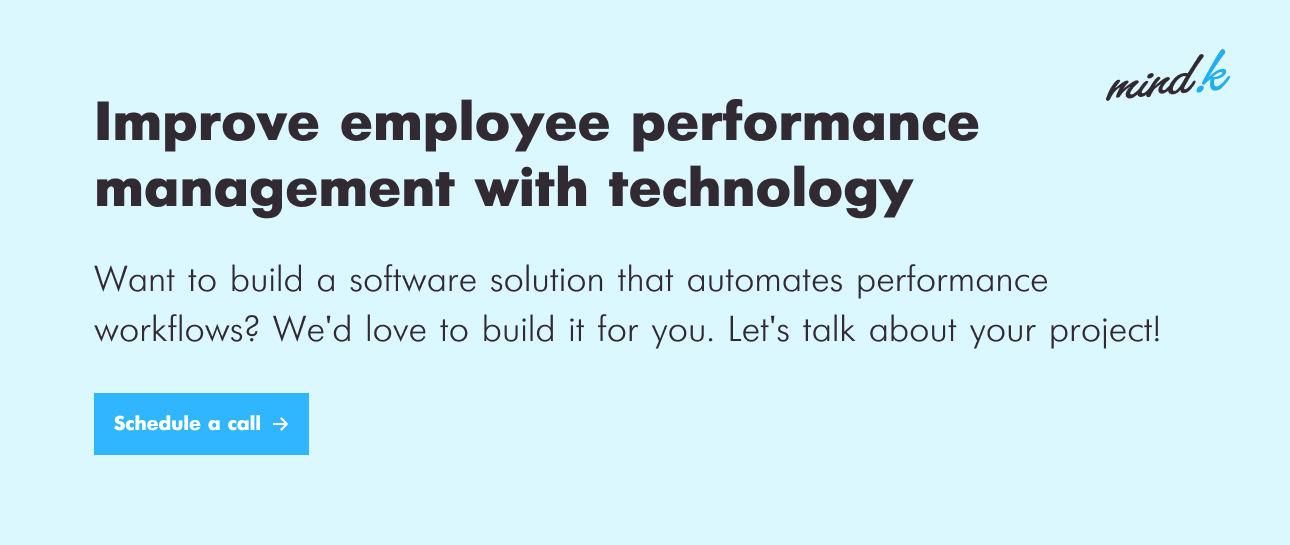
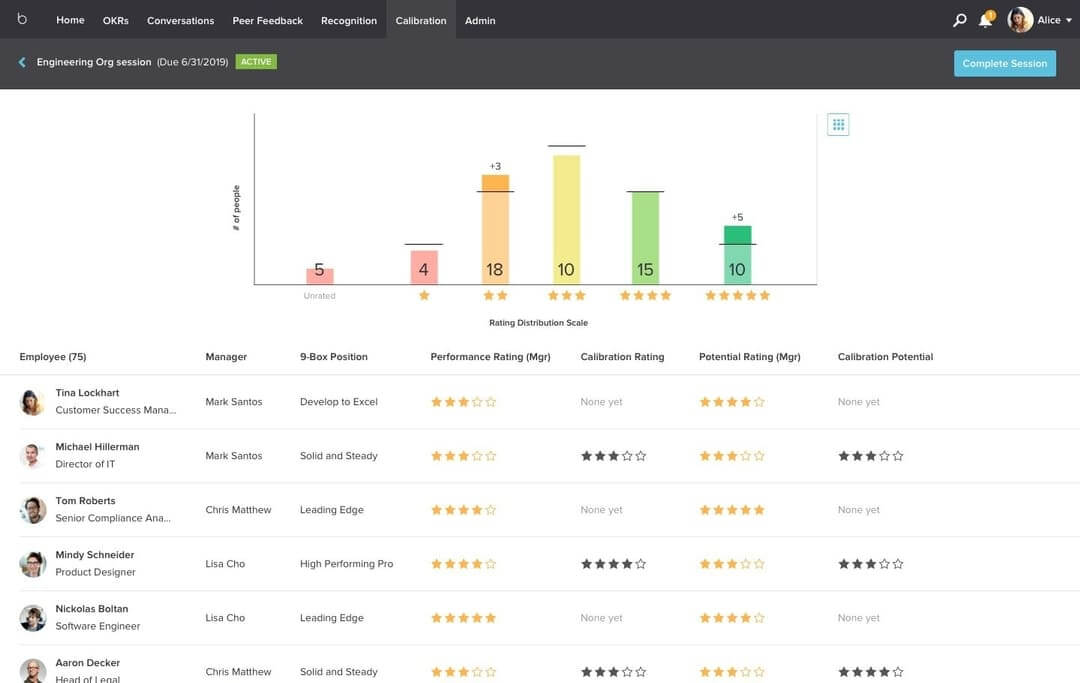


![Optimized Infrastructure Costs and Better Scalability with a Microservice Architecture [Case Study]](https://www.mindk.com/wp-content/uploads/2020/11/Migration_to_a_Microservice_Architecture-min-769x500.png)

